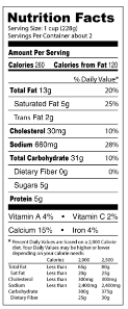A) physical activity
B) a kilocalorie output equal to the kilocalorie input
C) appropriate intake of vitamins and minerals
D) moderate intake of fats
E) All of the above are part of a plan to maintain a healthy weight.
Correct Answer

verified
Correct Answer
verified
Multiple Choice
Digestion in humans and earthworms
A) is similar in that in both organisms, digestion is an extracellular process, occurring in a complete digestive tract.
B) is different in that earthworms have a sac plan body plan and humans have a tube-within-a-tube body plan.
C) is different in that digestion is an extracellular process in humans but an intracellular process in earthworms.
D) is similar in that in both organisms, digestion is an intracellular process, occurring in an incomplete digestive system.
E) is similar in that in both organisms, digestion occurs in a simple tract, in which all parts of the tract are similar.
Correct Answer

verified
Correct Answer
verified
Multiple Choice
Which statement is correct about empty-calorie foods?
A) Empty-calorie foods have a high amount of sugar and/or fat in relation to the vitamin content.
B) Empty-calorie foods have a low amount of sugar and/or fat in relation to the vitamin content.
C) Empty-calorie foods have a high amount of protein in relation to the vitamin content.
D) Empty-calorie foods have a high amount of vitamins in them.
E) Empty-calorie foods have a high amount of fiber in them.
Correct Answer

verified
Correct Answer
verified
True/False
Obesity increases the risk of type 2 diabetes and cardiovascular disease.
Correct Answer

verified
Correct Answer
verified
Multiple Choice
Trans fats are
A) found naturally in all animals.
B) found naturally in all plants.
C) produced by hydrogenating unsaturated oils.
D) produced by hydrogenating saturated fats and unsaturated oils together.
E) produced by hydrogenating polysaturated fats.
Correct Answer

verified
Correct Answer
verified
True/False
Cholesterol can be synthesized by the body and is found in certain foods.
Correct Answer

verified
Correct Answer
verified
Multiple Choice
Energy needs are supplied by
A) carbohydrates, lipids, and proteins.
B) micronutrients.
C) antioxidants.
D) fiber.
E) essential amino acids.
Correct Answer

verified
Correct Answer
verified
Multiple Choice
One serving of the food shown on this label contains _____ calories from protein. 
A) 20
B) 5
C) 45
D) 15
E) 120
Correct Answer

verified
Correct Answer
verified
Multiple Choice
What criteria is used to distinguish between an empty-calorie food and a junk food?
A) Empty-calorie foods have a high sugar and/or fat-to-vitamin ratio.
B) Empty-calorie foods have a low sugar and/or fat-to-vitamin ratio.
C) Empty-calorie foods have no calories in them at all.
D) Empty-calorie foods are made completely from artificial ingredients.
E) Junk foods have a higher vitamins-to-sugar ratio than empty-calorie foods.
Correct Answer

verified
Correct Answer
verified
True/False
Scientific testing has not been performed on many herbal supplements.
Correct Answer

verified
Correct Answer
verified
Multiple Choice
Proteins must be ingested in order to obtain
A) necessary trans fats.
B) essential amino acids.
C) essential cholesterol.
D) needed minerals such as potassium and magnesium.
E) needed vitamins such as vitamin C.
Correct Answer

verified
Correct Answer
verified
Multiple Choice
During water toxication (hyponatremia) , which electrolytes can become out of balance?
A) sodium and potassium
B) sodium and calcium
C) calcium and potassium
D) iron and magnesium
E) zinc and iron
Correct Answer

verified
Correct Answer
verified
Multiple Choice
Which of the following is a healthy body mass index?
A) 20.3
B) 26.6
C) 29.2
D) 32.8
E) 41.5
Correct Answer

verified
Correct Answer
verified
Multiple Choice
The USDA recommends which type of food should compose the smallest percentage of our diet?
A) fruits and vegetables
B) fats and oils
C) meat, eggs, and nuts
D) breads and cereals
E) dairy products
Correct Answer

verified
Correct Answer
verified
Multiple Choice
Mark is 72 inches tall and weighs 180 pounds. His body mass index is
A) 24.4.
B) 20.0.
C) 29.8.
D) 33.2.
E) 35.4.
Correct Answer

verified
Correct Answer
verified
Multiple Choice
Which eating disorder is characterized by a person thinking that his or her body is underdeveloped?
A) muscle dysmorphia
B) binge-eating disorder
C) bulimia nervosa
D) anorexia nervosa
E) type 2 diabetes
Correct Answer

verified
Correct Answer
verified
Multiple Choice
Carbohydrates are typically broken down to
A) maltose, the molecule stored for future energy needs.
B) fructose, the molecule stored for future energy needs.
C) glucose, the molecule used as the energy source in cells.
D) glycogen, the molecule used as the energy source in cells.
E) glucose, the molecule stored for future energy needs.
Correct Answer

verified
Correct Answer
verified
Multiple Choice
Lipids
A) add to fecal bulk.
B) regulate metabolism and physiological development.
C) may be used to make certain hormones and vitamin D.
D) should be the main component of a healthy diet.
E) are found only in low amounts in animal sources of food.
Correct Answer

verified
Correct Answer
verified
Multiple Choice
If a person increases his food intake without increasing his energy need for metabolic functions or processing, what will he need to do in order to maintain his weight?
A) decrease physical activity
B) increase physical activity
C) consume additional vitamins
D) drink additional water
E) drink less water
Correct Answer

verified
Correct Answer
verified
Multiple Choice
Which of the following is a function of the digestive system?
A) eliminate dead bacteria
B) eliminate nondigestible food
C) eliminate bile pigments from the breakdown of hemoglobin
D) absorb nutrients
E) All of the above are functions of the digestive system.
Correct Answer

verified
Correct Answer
verified
Showing 21 - 40 of 74
Related Exams